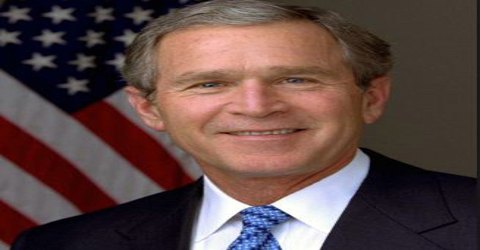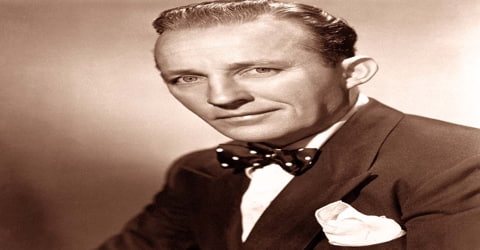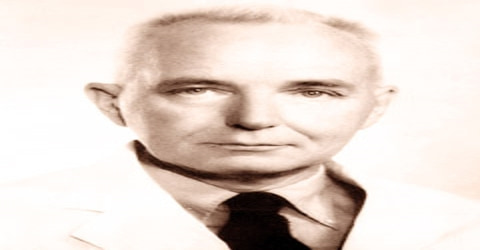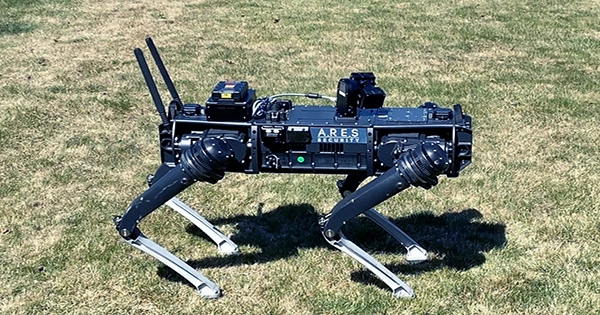George W. Bush – 43rd President of the United States
Full name: George Walker Bush
Date of birth: July 6, 1946 (age 70)
Place of birth: New Haven, Connecticut, U.S.
Residence: Dallas, Texas, U.S.
Father: George H. W. Bush
Mother: Barbara Pierce
Political party: Republican
Profession: Businessman, Politician
Spouse: Laura Bush (m. 1977)
Children: Jenna Bush Hager, Barbara Bush
Early Life
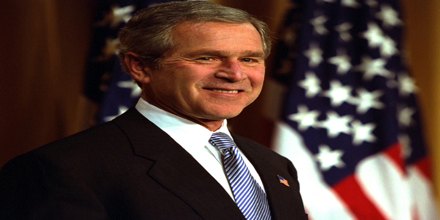
George Walker Bush was born on July 6, 1946, in New Haven, Connecticut, U.S. He is an American politician who served as the 43rd President of the United States from 2001 to 2009 and 46th Governor of Texas from 1995 to 2000. Prior to his Presidency, President Bush served for 6 years as the 46th Governor of the State of Texas, where he earned a reputation for bipartisanship and as a compassionate conservative who shaped public policy based on the principles of limited government, personal responsibility, strong families, and local control.
Bush successfully ran for re-election against Democratic Senator John Kerry in 2004, in another relatively close election. After his re-election, Bush received increasingly heated criticism from across the political spectrum for his handling of the Iraq War, Hurricane Katrina, and other challenges. Amid this criticism, the Democratic Party regained control of Congress in the 2006 elections. In December 2007, the United States entered its longest post-World War II recession, often referred to as the “Great Recession”, prompting the Bush administration to obtain congressional passage of multiple economic programs intended to preserve the country’s financial system. Nationally, Bush was both one of the most popular and unpopular presidents in history, having received the highest recorded presidential approval ratings in the wake of the September 11 attacks, as well as one of the lowest approval ratings during the 2008 financial crisis.
Bush left office in 2009, returning to Texas where he purchased a home in suburban Dallas. He is currently a public speaker, and has written a memoir, Decision Points. His presidential library was opened in 2013. His presidency has been ranked among the worst in historian rankings of U.S. presidents published in the late 2000s and 2010s.
Childhood and Educational Life
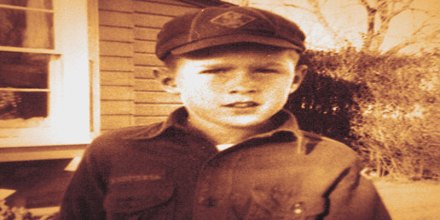
President Bush was born on July 6, 1946, in New Haven, Connecticut, as the first child of George Herbert Walker Bush and Barbara Pierce. He grew up in Midland and Houston, Texas. The Bush family had been involved in business and politics since the 1950s. Bush’s grandfather, Prescott Bush, was a former Wall Street banker and progressive Republican senator from Connecticut, and his father was a businessman, diplomat, and vice president and president of the United States.
In 1948, George H.W. Bush moved the family to Midland, Texas, where he made his fortune in the oil business. Young George spent most of his childhood in Midland, attending school there until the seventh grade. Bush attended high school at the Phillips Academy, a boarding school (then all-male) in Andover, Massachusetts, where he played baseball, and during his senior year, was the head cheerleader. He attended Yale University from 1964 to 1968, graduating with a Bachelor of Arts degree in History. During this time, he was a cheerleader and a member of the Delta Kappa Epsilon, serving as the president of the fraternity during his senior year Bush became a member of the Skull and Bones society as a senior. Bush was a rugby union player and was on Yale’s 1st XV. He characterized himself as an average student. His GPA during his first three years at Yale was 77, and he had a similar average under a nonnumeric rating system in his final year.
Beginning in the fall of 1973, Bush attended the Harvard Business School. He graduated in 1975 with an M.B.A. degree. He is the only U.S. president to have earned an M.B.A.

Two weeks before graduation, at the end of his draft deferment, George W. Bush enlisted in the Texas Air National Guard. It was 1968 and the Vietnam War was at its height. Though the Guard unit had a long waiting list, Bush was accepted through the unsolicited help of a family friend. Commissioned as a second lieutenant, he earned his fighter pilot certification in June of 1970. Despite irregular attendance and questions about whether he had completely fulfilled his military obligation, Bush was honorably discharged from the Air Force Reserve on November 21, 1974.
Personal Life
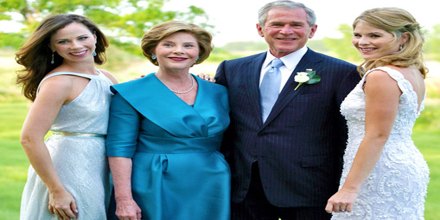
In 1977, at a backyard barbeque, Bush was introduced by friends to Laura Welch, a school teacher and librarian. After a quick three-month courtship, he proposed, and they were married on November 5, 1977. The couple settled in Midland, Texas, where Bush continued to build his business. On November 25, 1981, Laura Bush gave birth to fraternal twin daughters, Barbara and Jenna.
Bush says his wife has had a stabilizing effect on his life, and attributes to her influence his 1986 decision to give up alcohol. While Governor of Texas, Bush said of his wife, “I saw an elegant, beautiful woman who turned out not only to be elegant and beautiful, but very smart and willing to put up with my rough edges, and I must confess has smoothed them off over time.”
Bush has been an avid reader throughout his adult life, preferring biographies and histories. During his time as president, Bush read the Bible daily. He also read 14 Lincoln biographies and, during the last three years of his presidency, he reportedly read 186 books. Walt Harrington, a journalist, recalls seeing “books by John Fowles, F. Scott Fitzgerald, James Joyce, and Gore Vidal lying about, as well as biographies of Willa Cather and Queen Victoria” in his home when Bush was a Texas oilman. Other hobbies include cigar smoking and golf. Since leaving the White House, Bush has also taken up oil painting.
Military and Business Career
In May 1968, Bush was commissioned into the Texas Air National Guard. After two years of active-duty service while training, he was assigned to Houston, flying Convair F-102s with the 147th Reconnaissance Wing out of the Ellington Field Joint Reserve Base. Critics, including former Democratic National Committee Chairman Terry McAuliffe, have alleged that Bush was favorably treated due to his father’s political standing as a member of the House of Representatives, citing his selection as a pilot despite his low pilot aptitude test scores and his irregular attendance.

In late 1972 and early 1973, he drilled with the 187th Fighter Wing of the Alabama Air National Guard, having moved to Montgomery, Alabama, to work on the unsuccessful U.S. Senate campaign of Republican Winton M. Blount. In 1972, Bush was suspended from flying for failure to take a scheduled physical exam. He was honorably discharged from the Air Force Reserve on November 21, 1974.
In 1977, Bush established Arbusto Energy, a small oil exploration company, although it did not begin operations until the following year. He later changed the name to Bush Exploration. In 1984, his company merged with the larger Spectrum 7, and Bush became chairman. The company was hurt by decreased oil prices, and it folded into HKN, Inc., with Bush becoming a member of HKN’s board of directors. Questions of possible insider trading involving HKN arose, but a Securities and Exchange Commission (SEC) investigation concluded that the information Bush had at the time of his stock sale was not sufficient to constitute insider trading.
In April 1989, Bush purchased a share in the Texas Rangers baseball franchise, where he served as managing general partner for five years. He actively led the team’s projects and regularly attended its games, often choosing to sit in the open stands with fans. Bush’s sale of his shares in the Rangers in 1998 brought him over $15 million from his initial $800,000 investment.
Political Career
Governor of Texas
In 1988, George W. Bush moved his family to Washington DC to work on his father’s bid for the White House, participating in campaign activities and meeting influential people. After his father’s victory, he returned to Texas, and in 1989 joined a group of investors purchasing the Texas Rangers baseball team. George W. Bush quickly emerged as the group’s leader and made some savvy trades. The team did well and Bush earned a reputation as a successful businessman. In 1998, Bush sold his share of the team for a reported 17 times his initial investment.
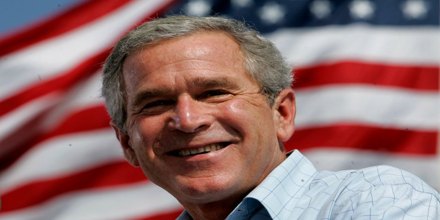
After his father’s 1992 reelection loss to Bill Clinton, George W. Bush decided to run for governor of Texas as a Republican. His affiliation with the Rangers and his family reputation helped him in the 1994 campaign against incumbent Democrat Ann Richards. His campaign focused on welfare and tort reform, crime reduction, and education improvement. The contest was contentious and bare knuckled, with accusations of financial impropriety on one side, and homosexuality on the other. Bush won the election with 53 percent of the vote and became the first child of a U.S. president to be elected a state governor. In 1998, Bush became the first Texas governor to be elected to consecutive four-year terms.
As governor, George W. Bush appealed to moderate Republicans and Christian conservatives in his own party and earned a reputation for bipartisan governing. He implemented the philosophy of “compassionate conservatism,” which combined limited government with concern for the underprivileged and personal responsibility. The previous gubernatorial administration left the Texas treasury in a surplus, so Bush pushed for a tax cut and increased funding for education. He promoted educational reform, tying teachers’ salaries to student performance on standardized tests, and signed into law legislation lowering the age at which juveniles could be tried in adult courts.
First Term as President
In June 1999, while Governor of Texas, Bush announced his candidacy for President of the United States. With no incumbent running, Bush entered a large field of candidates for the Republican Party presidential nomination consisting of John McCain, Alan Keyes, Steve Forbes, Gary Bauer, Orrin Hatch, Elizabeth Dole, Dan Quayle, Pat Buchanan, Lamar Alexander, John Kasich, and Bob Smith.
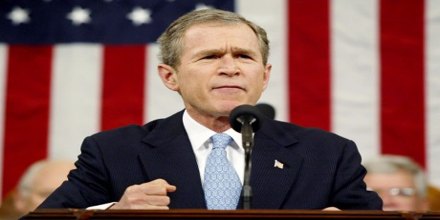
On July 25, 2000, Bush surprised some observers by asking Dick Cheney, a former White House Chief of Staff, U.S. Representative, and Secretary of Defense, to be his running mate. Cheney was then serving as head of Bush’s Vice-Presidential search committee. Soon after, Bush and Cheney were officially nominated by the Republican Party at the 2000 Republican National Convention.
The 2000 presidential election pitting George W. Bush and Democratic candidate Al Gore was close and controversial. As Election Day unfolded, there was no clear winner. The late-night news declared one candidate the winner, then the other the winner. By early the next morning, Bush had 246 electoral votes and Gore had 255, with 270 needed to win. Florida’s 25 electoral votes were held in the balance where several counties reported problems with balloting. After more than a month of recounts and legal maneuvering, the U.S. Supreme Court decided the election, giving George Bush the victory. Though Gore lost the election in the Electoral College (271 to 266) he received over 543,000 more popular votes than Bush, a result that further complicated Bush’s victory.
In the first two years of his presidency, George W. Bush enjoyed a political majority in both Congressional houses but faced a strongly divided government. At times, his political rhetoric fueled this divide. Taking a budget surplus left by the previous Democratic administration, Bush pushed through a $1.35 trillion tax cut to stimulate the economy, but critics contended it favored the wealthy. His administration prompted further controversy when he announced the U.S. would not abide by the Kyoto Protocol for reducing green-house gas emissions, citing potential harm to the U.S. economy.
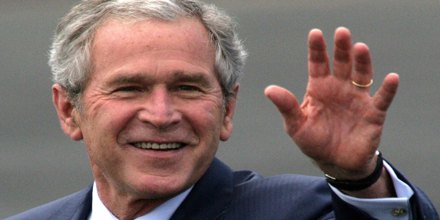
Bush took office during a period of economic recession in the wake of the bursting of the Dot-com bubble. The terrorist attacks also impacted the economy. The Bush administration increased federal government spending from $1.789 trillion to $2.983 trillion (60 percent) while revenues increased from $2.025 trillion to $2.524 trillion (from 2000 to 2008). Individual income tax revenues increased by 14 percent, corporate tax revenues by 50 percent, customs and duties by 40 percent. Discretionary defense spending was increased by 107 percent, discretionary domestic spending by 62 percent, Medicare spending by 131 percent, social security by 51 percent, and income security spending by 130 percent. Cyclically adjusted, revenues rose by 35 percent and spending by 65 percent.
On September 11, 2001, Al Qaeda terrorists hijacked four U.S. commercial jetliners. Three of them hit their targets in New York and Washington, D.C. A fourth plane crashed into a farmer’s field in Pennsylvania. The war on terror had begun, and President George W. Bush promised the American people that he would do all he could to prevent another terrorist attack. A comprehensive strategy was formed with the creation of the Homeland Security Department, the Patriot Act and the authorization of intelligence gathering that, for a time, included monitoring international phone calls made by U.S. citizens. The Bush administration also built international coalitions to seek out and destroy Al Qaeda and other terrorist organizations in Afghanistan, where the ruling Taliban government was said to be harboring Al Qaeda leader Osama bin Laden.

In September, 2002, the Bush administration announced that the United States would preemptively use military force if necessary to prevent threats to its national security by terrorists or “rogue states” especially any that possessed weapons of mass destruction. Based on what would prove to be inaccurate intelligence reports, the Bush administration successfully obtained a UN Security Council resolution to return weapons inspectors to Iraq. Soon afterward, Bush declared that Iraq hadn’t complied with inspections, and on March 20, 2003, the United States launched a successful invasion of Iraq, quickly defeating the Iraqi military. Baghdad, the Iraqi capital, fell on April 9, 2003, and Bush personally declared an end to major combat operations on May 1, 2003. With a power vacuum in place, Iraq soon fell into a sectarian civil war.
Second Term as President
In 2004, Bush commanded broad support in the Republican Party and did not encounter a primary challenge. He appointed Ken Mehlman as campaign manager, with a political strategy devised by Karl Rove. Bush and the Republican platform included a strong commitment to the wars in Iraq and Afghanistan, support for the USA PATRIOT Act, a renewed shift in policy for constitutional amendments banning abortion and same-sex marriage, reforming Social Security to create private investment accounts, creation of an ownership society, and opposing mandatory carbon emissions controls. Bush also called for the implementation of a guest worker program for immigrants, which was criticized by conservatives.
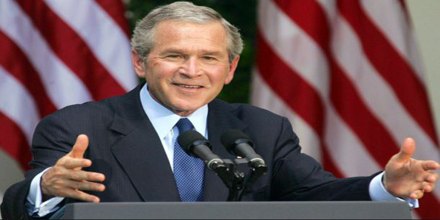
In the election, Bush carried 31 of 50 states, receiving a total of 286 electoral votes. He won an absolute majority of the popular vote (50.7 percent to his opponent’s 48.3 percent). The previous President to win an absolute majority of the popular vote was Bush’s father in the 1988 election. Additionally, it was the first time since Herbert Hoover’s election in 1928 that a Republican president was elected alongside re-elected Republican majorities in both Houses of Congress.
During his second term, Bush pushed for immigration reform, which received criticism from many conservatives, and eased environmental regulations, which received criticism from many liberals. The Bush administration’s poor response to Hurricane Katrina in New Orleans further pushed down his favorability rating.
In 2008, as George W. Bush entered the final year of his presidency, the country faced enormous challenges. The United States was fighting two foreign wars, and the budget surplus left by the Clinton administration had transformed into a multi-trillion-dollar debt—the effects of military spending, tax cuts, and slow economic growth. In the early fall of 2008, the country was hit with a severe credit crisis that sent the stock market into free fall and led to massive layoffs. The Bush administration scrambled and encouraged Congress to enact a controversial $700 billion Emergency Economic Stabilization Act to bail out the housing and banking industries.
In his 2008 State of the Union Address, Bush announced that the U.S. would commit $2 billion over the next three years to a new international fund to promote clean energy technologies and fight climate change, saying, “Along with contributions from other countries, this fund will increase and accelerate the deployment of all forms of cleaner, more efficient technologies in developing nations like India and China, and help leverage substantial private-sector capital by making clean energy projects more financially attractive.” He also announced plans to reaffirm the United States’ commitment to work with major economies, and, through the UN, to complete an international agreement that will slow, stop, and eventually reverse the growth of greenhouse gases; he stated, “This agreement will be effective only if it includes commitments by every major economy and gives none a free ride.”

On May 21, 2008 President George W. Bush signed into law the Genetic Information Nondiscrimination Act (GINA). The bill aims to protect Americans against discrimination based on their genetic information when it comes to health insurance and employment. The issue had been debated for 13 years before becoming law. It is designed to protect citizens while not hindering genetic research.
Life after Presidency

George W. Bush left office in January, 2009, leaving behind much unfinished business and low approval ratings. The country remained politically divided. Critics laid much of the country’s misfortunes at his feet, while supporters defended him for his strong leadership during one of the country’s most dangerous periods. Bush and his wife settled in Dallas, Texas, where he participated in the building of his presidential library and wrote his memoir “Decision Points.” At the request of President Barack Obama, Bush and former president Bill Clinton led private fundraising efforts in the United States for disaster relief, after the 2010 Haiti earthquake.
On August 6, 2013, Bush was successfully treated for a coronary artery blockage with a stent. The blockage had been found during an annual medical examination.
In 2012, he wrote the foreword of The 4% Solution: Unleashing the Economic Growth America Needs, an economics book published by the George W. Bush Presidential Center. He also presented the book at the Parkland Memorial Hospital in Dallas, Texas.
Bush published a biography of his father, George Bush, called 41: A Portrait of My Father. It was released on November 11, 2014.
Bush ran into some health problems later that summer. On August 6, he underwent surgery to insert a stent in his heart to open a blockage in one of his arteries. The blockage discovered during his annual physical. Through a spokesperson, Bush expressed his gratitude to “the skilled medical professionals who have cared for him,” according to the Associated Press. Bush also thanked “his family, friends, and fellow citizens for their prayers and well wishes. And he encourages us all to get our regular check-ups.”
That October, it was revealed that Bush’s heart condition was more serious than originally described. He had a 95% blockage in that artery before his surgery, according to CNN.com. If he had not been treated, Bush would have been at risk of having a heart attack.
